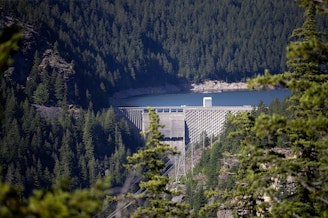These dogs sniff out invasive mussels to protect Washington waters
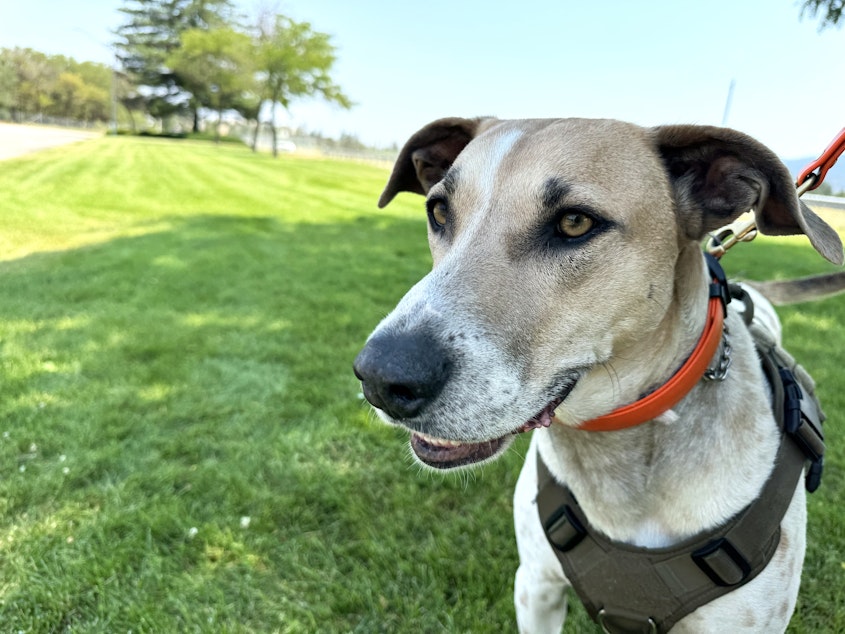
At a watercraft inspection station along the highway a few miles from the Idaho border, one very good boy is doing a very good job.
Fin is the Washington Department of Fish and Wildlife’s mussel-smelling dog. He’s about 4 years old and is a Catahoula leopard dog, blue lacy and Australian kelpie mix. Like a drug or bomb-smelling dog, his nose is particularly good at sniffing out tiny, invasive mussels.
RELATED: KUOW's League of Murder Creatures
The invasive zebra and quagga mussels smell like an old gym sock. Nick Knauss, Fin’s handler, said it’s not about detecting the smell. It’s about the speed at which Fin can pick it up.
Dogs are way better at detecting smells than people are, he said.
Sponsored
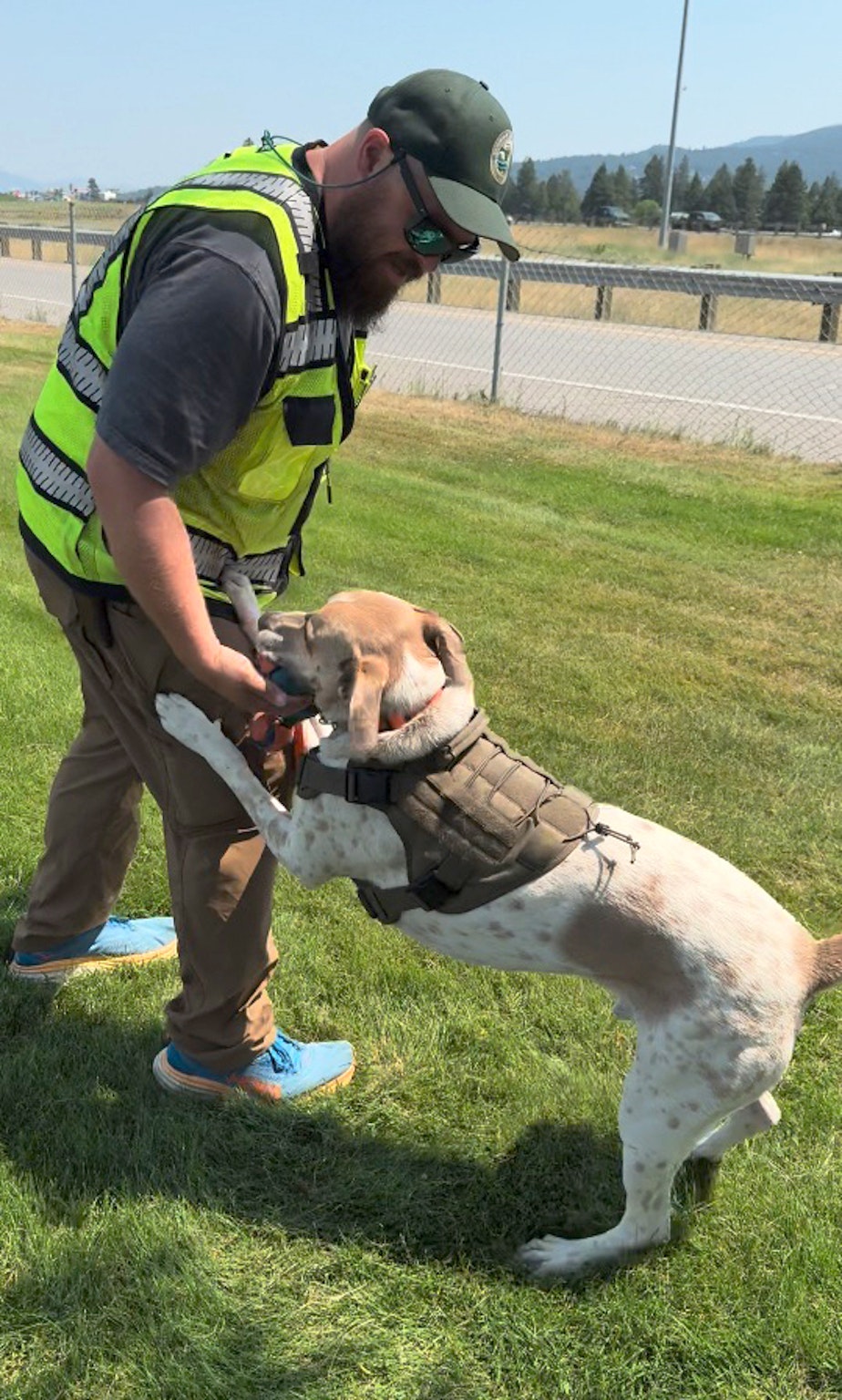
These invasive freshwater mussels hitch a ride on boats or trailers. At this station, they’re often coming from the Great Lakes area, Knauss said. Smaller mussels can be about the size of a nail head, he said. Adult mussels are about the size of a quarter.
The tiny hitchhikers clog pipes and filters, and they could change river and lake ecosystems. They’re especially harmful to hydropower systems. Washington’s Invasive Species Council estimates it could cost more than $100 million each year to keep power and water infrastructure up and running if these mussels took hold in the state.
On July 1, the state legislature appropriated $1.81 million to prevent invasive mussels from getting a foothold in Washington. The U.S. Army Corps of Engineers kicked in an additional $1.81 million.
Native to the Caspian and Black seas, they have hair-like threads called byssal threads that allow them to attach to hard surfaces, like boats. Local freshwater mussels don’t have those.
Sponsored
It wouldn’t take many quagga or zebra mussels to infiltrate Washington’s waters, Knauss said.
RELATED: Invasive mussels inching closer to the Columbia Basin, federal report says more could be done
“Just two muscles is all it takes, and you can have an issue started,” he said. A single mussel can produce 30,000 to 40,000 eggs per year, sometimes up to a million, Knauss said.
As soon as the invasive mussels start growing a shell they can attach, Knauss said. They’re known as settlers.
Keeping these tiny, striped mussels out of the state isn’t for the faint of heart. Once they establish somewhere, they’re nearly impossible to eradicate, he said. “Historically, there’s no success story of them being eradicated from a water body once they’ve taken hold, so anything we can do to prevent that is paramount,” he said
Sponsored
Zebra and quagga mussels are considered priority species for Washington’s Invasive Species Council. Right now, the Columbia River Basin is the only major river system in the U.S. that doesn’t have an invasive mussel infestation.
But it’s close.
In 2023, larval quagga mussels, known as veligers, were found on the Snake River in Idaho. The Idaho Department of Agriculture uses planktonic nets to search for these microscopic mussels.
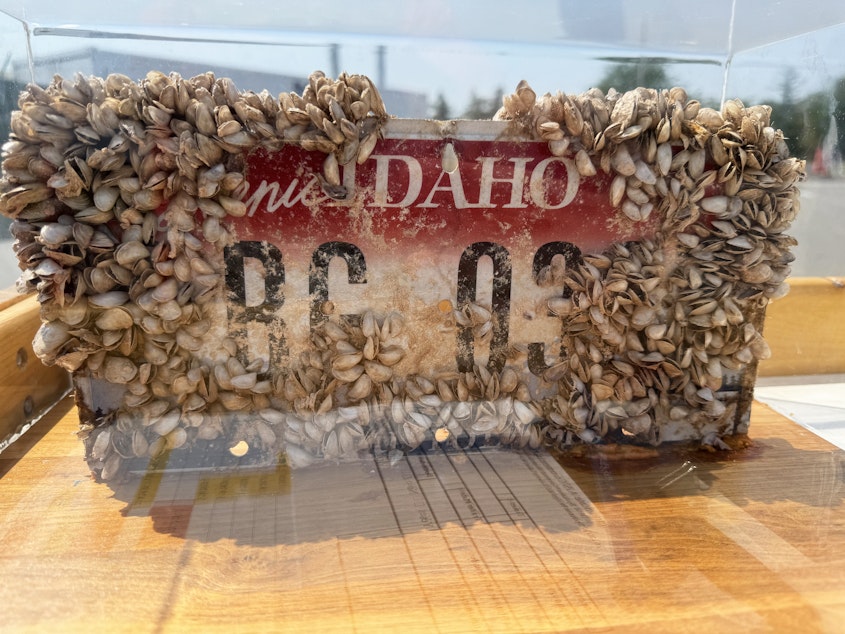
It’s something inspectors in Washington have taken seriously, said Staci Lehman, a spokesperson for the department.
Sponsored
“Once they get in an area, it’s such a battle,” she said.
At this inspection station in Liberty Lake, Fin sat at attention every time he saw a boat entering the area, nearly a football field away. His high energy keeps him ready to work.
On busy weekends, like the Fourth of July, inspectors can search 400 boats a day. Fin works up to 140 boats on high-traffic weekends, Knauss said.
Fin’s got a full-time gig, working about 40 hours a week.
RELATED: Could studying how dogs age help us understand the ways humans do?
Sponsored
As a driver with a boat pulled up to the inspection station, a crew member talked to the driver while Knauss and Fin strolled around the boat. Fin has been highly trained to search for teeny, tiny mussels. If he finds one, his head snaps up.
He’ll sit. It’s up to Knauss to find the stowaways.
Then, Fin got his reward: his favorite toy, two chewy orange balls tied together with a blue rope.
“We definitely don’t want to do treats because, you know, 150 treats a day. I’ll be dragging him around. Instead of him dragging me around,” Knauss said.
He only gets this special toy at work.
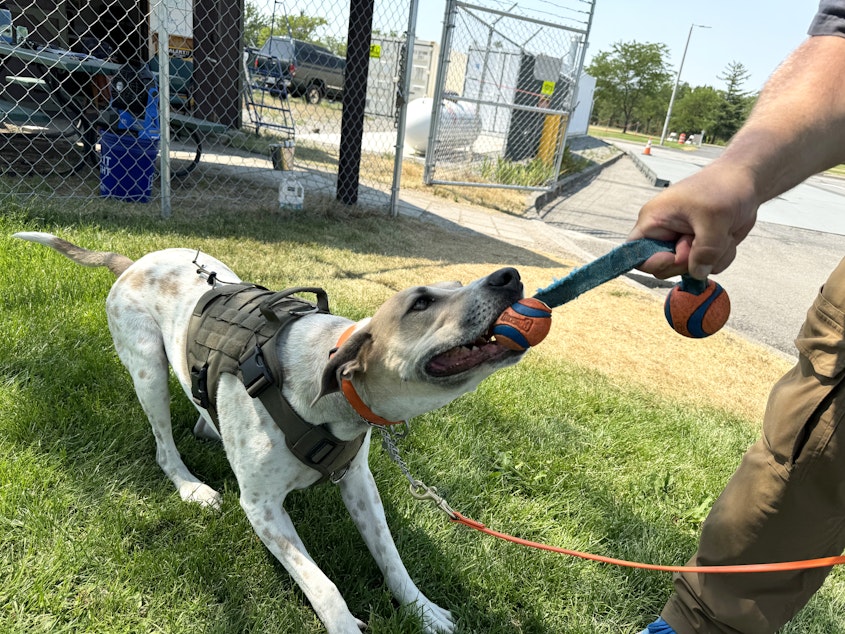
During training, Fin was a quick study, Knauss said.
“At first you’re, you’re covering the toy in that scent and you’ll hide it,” he said. “When he finds it, he gets to play with it and then you separate the two. So you have the scent and once he finds the scent, then you reward with the toy immediately. And so he associates the two.” Knauss said it was harder for him to pick up Fin’s signals, but he’s a pro now, noting the tiniest changes in Fin’s behavior. The department adopted Fin from Texas, where he’d been abandoned.
A local K-9 trainer in Spokane taught him and Knauss the ropes of searching for mussels.
Fin is the second mussel-sniffing pooch the department has enlisted. Lehman said the department’s first dog, Puddles, retired with her handler.
“(The dog) increases the efficiency of the whole process of checking boats. (Fin) just does a pass while we have to get down and look close,” she said.
The department also checks eDNA, or environmental-DNA, to watch for the mussels.
RELATED: Claws for concern: The green crab epidemic threatening Washington clams
Each dog costs thousands of dollars to specially train. Puddles, the first mussel-sniffing dog, cost $20,000. Fin cost about $7,000. Knauss said the department would like a second dog, especially near the Tri-Cities, but they need more funding. At the station north of Pasco, a lot of boats make their way up from Lake Mead, Lake Havasu and Lake Powell. Those are invasive mussel hotspots.
Knauss said it’s exciting and scary to find an invasive mussel on a boat.
“It’s like, ‘Yeah, we got something,’ but it’s like, ‘Oh shoot, that thing made it over here,’” he said.
The pair didn’t find any mussels found on this day. For Knauss, that’s good news.

